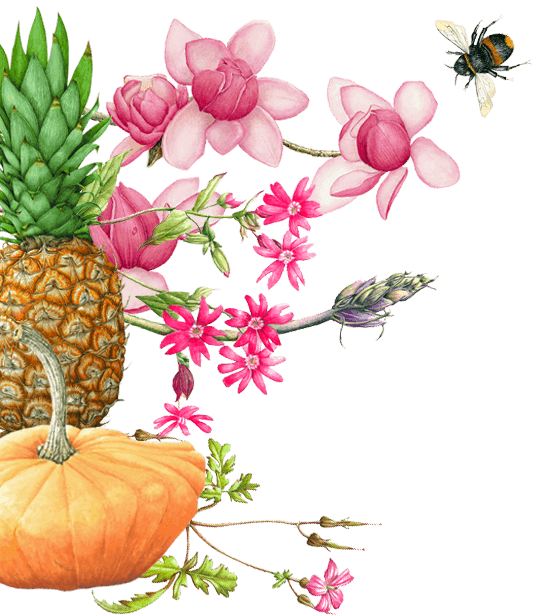The Gardens in May
- 2nd May 2019
The last few days have been still and calm with warmth more suitable to shorts than trousers. Wherever you go birdsong fills the air, a soundtrack to a garden in bloom. Giant deciduous trees unfurl their bright green leaves filling the canopy above and shading the forest floor beneath. It is here that wildflower carpets of blue, pink and yellow flood all available space. Pollinators thrive here, their industrious hum evidence of a flourishing landscape. From the Estate, the Jungle and the Paddocks to the Pleasure Grounds and the walled Productive Gardens, Heligan is a joy for the visitor in May.
The Pleasure Grounds are a celebration of the senses. Windblown rhododendrons release bright petal confetti that line meandering paths below their boughs. Euphorbia melifera fills the air with a rich honey aroma, so sweet that even the most determined walker gets caught in its lazy haze. The Azealia’s, flushing bright pink, lose all resemblance to the garden shrub we once knew. Ferns in all shapes and sizes start to stretch out their fronds and echiums begin their remarkable journey to improbable heights. Enormous tulips gently sway in the wind and wisteria blooms begin to droop under their own weight, fuscias in all shapes and sizes hang suspended and arum lilies stand proud. These grounds are always a pleasure to walk through, ever-changing and ever a surprise.
Within the walls of the Productive Garden, the team have been busy getting ready for another summer of growth. The cold frames – used to harden off plants – are now full of seedlings ready for the patch. The seed of pea, turnip, chicory, beetroot and leek are now being sown to the earth. Courgette is planted on raised mounds with manure beneath, a heritage technique used to conserve water and replenish nutrients. Potatoes are now being earthed up – a process that prevents new potatoes from growing, turning green and becoming poisonous. To keep up with the kitchen, lettuce plants are planted in rotation, as plants are harvested, they are replenished by seedling recruits from the frames. Heligan rhubarb too will be harvested soon after which it will be sent to Callestick Farm to be turned into scrumptious Heligan Rhubarb and Salted Caramel Ice Cream. Peach trees will be thinned, and the citrus trees moved outdoors to their summer homes. Finally, the iconic apple arch is in bloom, the blossom-heavy with aroma, so tempting to the passing bee.
The Estate is not to be forgotten, rivers of bluebells surround each and every tree, if you are lucky you may even discover the rare white bell – a genetic occurrence found once in every 50,000. Wild garlic is often smelt before it is seen, that fresh almost spicy smell so reminiscent of a British wood in summer. Pink Campion too stand erect, leaning this way and that with the slightest of gusts. Primroses, the earliest arrival of them all, now stand firm where other delicate wildflowers cannot – the edge of a path or steep-sided ravine. To describe each and every flower would take a lifetime of walks, so, for now, a simple stroll will get us off to a good start.
The Estate is not to be forgotten, rivers of bluebells surround each and every tree, if you are lucky you may even discover the rare white bell – a genetic occurrence found once in every 50,000. Wild garlic is often smelt before it is seen, that fresh almost spicy smell so reminiscent of a British wood in summer. Pink Campion too stand erect, leaning this way and that with the slightest of gusts. Primroses, the earliest arrival of them all, now stand firm where other delicate wildflowers cannot – the edge of a path or steep-sided ravine. To describe each and every flower would take a lifetime of walks, so, for now, a simple stroll will get us off to a good start.






